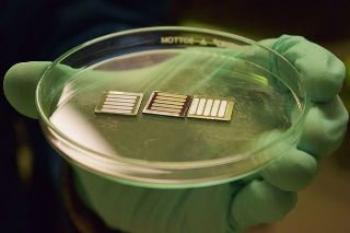Researchers at the University of California, Los Angeles (UCLA) and the California NanoSystems Institute have managed to improve the stability of perovskite solar cells by using metal oxide layers. This novel assembly helps increase the service life of this kind of solar cells by over 10 times, with just a minimal loss to its conversion efficiency.

While many reasons exist for the fast disintegration of normally layered perovskite solar cells, the scientists claim that the key reason is the commonly used top organic buffer layer, which does not offer any stability and cannot effectively protect the perovskite material from moisture found in air. The buffer layers are crucial to cell construction as electricity, which is produced by the cell, is extracted through them. In this work, the organic layers were replaced with metal oxide layers, which sandwiched the perovskite material, thus providing adequate moisture protection. The change was very obvious. The newly formed metal oxide cells were able to withstand open-air storage conditions for 60 days at room temperature, and could retain 90% of its original solar conversion effectiveness.
The researchers plan to condense the metal oxide layers further to improve the efficiency and protect the solar cell to extend the service life without compromising its efficiency.

